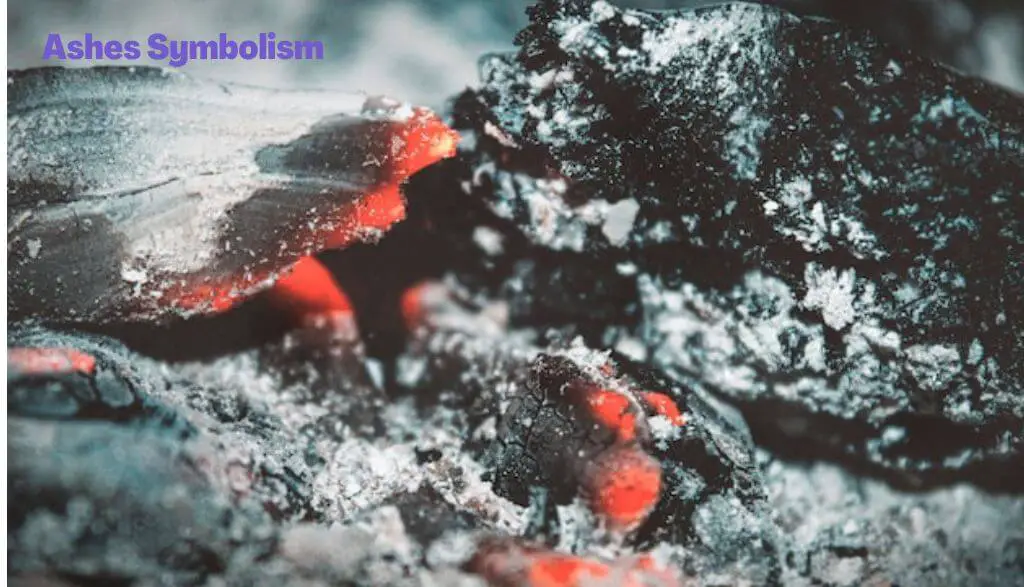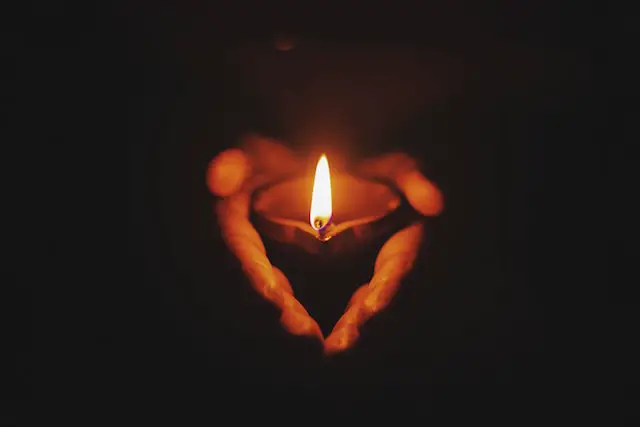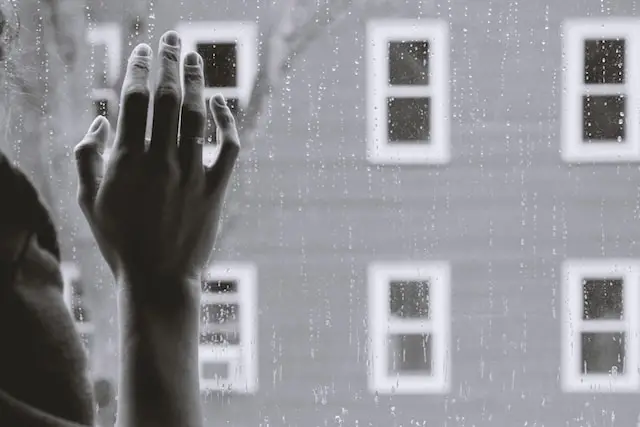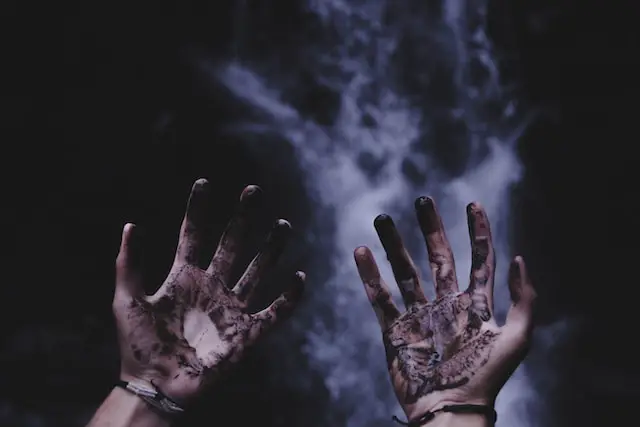Greetings, fellow explorers of the extraordinary in the ordinary! Have you ever taken a second glance at the powdery remnants of a fire, those little ashes left behind, and thought – could there be more to this?
Well, it’s time to dust off your perceptions and see these ashes in a whole new light.
Today, we’re unearthing the hidden meanings and untold stories behind ashes symbolism. So, brace yourself for a surprising ride through the world of symbolism that’s going to leave you looking at ashes in a way you never imagined.

Ashes Symbolism
- Death
- Rebirth
- Mortality
- Grief
- Sacrifice
- Purification
Death

Oh boy, we’re starting deep, aren’t we? Ashes have been a symbol of death for as long as humans have been making sense of our existence. But let me tell you, it’s not all doom and gloom!
See, ashes remind us of death because they represent the final state of matter when all is consumed by fire. They’re what’s left behind when the fire of life goes out. You’ve probably heard the phrase “ashes to ashes, dust to dust.” That’s exactly what I’m talking about. When we return to ashes, we’re returning to our most basic, elemental state.
But here’s the catch: ashes aren’t just about ending; they’re also about the potential for new beginnings. Yeah, you heard me right. They’re a symbol of death, sure, but they’re also a reminder of the cycle of life, death, and rebirth.
Think about it: ashes are incredibly fertile and can enrich the soil, allowing new life to flourish. So in a way, they’re a symbol of hope, a reminder that from every ending springs a new beginning. Now isn’t that a beautiful thought?
Rebirth

Swimming with the same current, let’s dive right into ashes as a symbol of rebirth. The whole concept of rising from the ashes is just too inspiring to pass up!
Picture the Phoenix, this legendary bird known to rise from its own ashes. It’s a symbol of rebirth, resurrection, and immortality. The Phoenix doesn’t just keel over and die. No, it goes out in a blaze of glory, and then, boom! New life from the ashes.
So, how does this tie into your own life? Well, have you ever had moments when everything seemed to be falling apart, but then something positive came out of it?
Like you hit rock bottom and suddenly, you’re filled with renewed energy, fresh ideas, and an insatiable drive to start again? That’s you, the Phoenix, rising from the ashes.
Related Article: Spring Symbolism
Mortality

Have you ever sat by a campfire and watched it die out, leaving behind only ashes? That’s mortality for you, a stark, tangible reminder that nothing lasts forever. Like fire, our lives are vibrant, warm, and full of energy one moment and gone the next. It’s not a bad thing, really. It’s just life. It’s just… well, mortality.
Ashes drive home the reality that we’re all here on borrowed time. They tell us that life is transient, and every moment is precious. And, you know, it’s a message that we often need to hear. In our busy lives, it’s all too easy to forget our mortality and to take tomorrow for granted. But tomorrow isn’t promised, is it?
Here’s a little story for you: When I was a kid, I was terrified of the idea of death. It was too big, too permanent. But then someone told me to think of life like a book. Every book, no matter how long or short, eventually comes to an end. And it’s not the length that matters, but the story itself.
So, let the ashes remind you of your mortality, not to instill fear, but to inspire you. They’re saying, “Hey, make the most of your time. Live your story. Live it well.”
Grief

And now we come to ashes as a symbol of grief. This one can be a bit heavy, but it’s also incredibly important to talk about.
You know when you’ve lost someone dear to you, and the weight of the loss feels like a pile of ashes in your heart? That’s grief for you, raw and all-consuming. And ashes perfectly encapsulate that feeling, the heaviness, the emptiness that comes with loss.
But ashes don’t just symbolize the pain of losing someone; they also stand for the process of grieving itself. Like when you spread a loved one’s ashes, you’re not just letting go of them, you’re also confronting your grief head-on, acknowledging it, feeling it. And that’s crucial to healing.
I remember when my grandfather passed away. It felt like I was carrying around a sack of ashes in my chest for months. But when we scattered his ashes on his favorite beach, something inside me shifted. I still missed him, of course, but it felt like I was finally able to start moving forward. I was honoring him, honoring my grief, but also allowing myself to heal.
So, let ashes be a symbol of your grief, yes, but also of your healing process. It’s okay to feel the weight of loss, to honor it, and eventually, when we’re ready, to let it go.
Sacrifice

Think about what happens when you burn something. It’s a transformation, right? Something is consumed, changed fundamentally, and in its place, ashes are left behind. This process is so similar to the concept of sacrifice. You give up something – you ‘burn’ it – in the hope of achieving something else, something greater.
You see, sacrifice is often about letting go of immediate gratification for long-term benefit. And ashes, as the aftermath of fire, symbolize that very process.
I’ll share a little anecdote here. When I was starting out as a writer, I had a comfortable day job that paid the bills. But I knew I had to give it up, to ‘burn’ that safety net, if I wanted to fully commit to my dream. So I did. And those initial months were tough, they were my pile of ‘ashes’. But they were also the fertile ground from which my new career sprouted.
Purification

Finally, we arrive at ashes as a symbol of purification. You’ve probably heard about Ash Wednesday, right? It marks the start of Lent, a time of purification, self-reflection, and penance. On this day, you’ll see folks with ash crosses on their foreheads. It’s not just for show, but a profound symbol of cleansing and repentance.
The ashes used are usually from burnt palm leaves from the previous year’s Palm Sunday. How cool is that? It’s like a symbolic torch is being passed from one year to the next. These ashes, smeared on the forehead, serve as a reminder of mortality, but they’re also a symbol of cleansing, of purifying oneself for the spiritual journey of Lent.
And it’s not just in Christianity. Many cultures and religions around the world use ashes or smudging (which produces ashes) as part of their cleansing rituals. They believe that burning certain items can rid a place, object, or person of negative energies, and the ashes left behind are a symbol of the negativity that’s been cleansed away.
Wrapping it up
So, that’s the end of our little journey through the symbolism of ashes. Next time you see this humble residue, think of the stories it tells: tales of life, death, rebirth, mortality, grief, sacrifice, and purification. Who knew that such simple, seemingly insignificant dust could hold so much meaning, huh?
Thank you for reading. If you enjoyed this article, here’s another popular read: Sand Symbolism